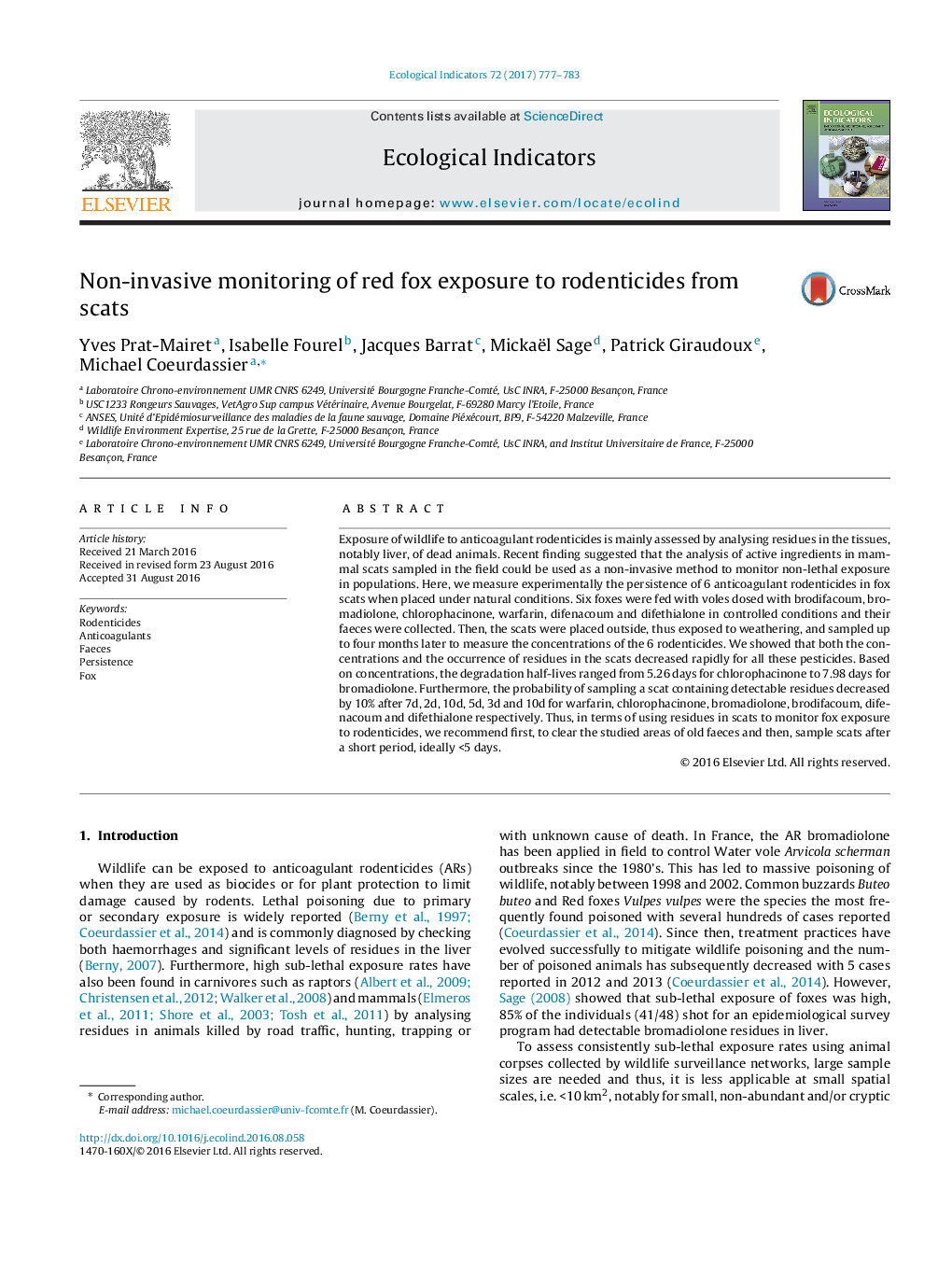| کد مقاله | کد نشریه | سال انتشار | مقاله انگلیسی | نسخه تمام متن |
|---|---|---|---|---|
| 6292868 | 1617130 | 2017 | 7 صفحه PDF | دانلود رایگان |
عنوان انگلیسی مقاله ISI
Non-invasive monitoring of red fox exposure to rodenticides from scats
ترجمه فارسی عنوان
بررسی غیر تهاجمی از مواجه شدن با روباه قرمز در موش صحرایی
دانلود مقاله + سفارش ترجمه
دانلود مقاله ISI انگلیسی
رایگان برای ایرانیان
موضوعات مرتبط
علوم زیستی و بیوفناوری
علوم کشاورزی و بیولوژیک
بوم شناسی، تکامل، رفتار و سامانه شناسی
چکیده انگلیسی
Exposure of wildlife to anticoagulant rodenticides is mainly assessed by analysing residues in the tissues, notably liver, of dead animals. Recent finding suggested that the analysis of active ingredients in mammal scats sampled in the field could be used as a non-invasive method to monitor non-lethal exposure in populations. Here, we measure experimentally the persistence of 6 anticoagulant rodenticides in fox scats when placed under natural conditions. Six foxes were fed with voles dosed with brodifacoum, bromadiolone, chlorophacinone, warfarin, difenacoum and difethialone in controlled conditions and their faeces were collected. Then, the scats were placed outside, thus exposed to weathering, and sampled up to four months later to measure the concentrations of the 6 rodenticides. We showed that both the concentrations and the occurrence of residues in the scats decreased rapidly for all these pesticides. Based on concentrations, the degradation half-lives ranged from 5.26 days for chlorophacinone to 7.98 days for bromadiolone. Furthermore, the probability of sampling a scat containing detectable residues decreased by 10% after 7d, 2d, 10d, 5d, 3d and 10d for warfarin, chlorophacinone, bromadiolone, brodifacoum, difenacoum and difethialone respectively. Thus, in terms of using residues in scats to monitor fox exposure to rodenticides, we recommend first, to clear the studied areas of old faeces and then, sample scats after a short period, ideally <5 days.
ناشر
Database: Elsevier - ScienceDirect (ساینس دایرکت)
Journal: Ecological Indicators - Volume 72, January 2017, Pages 777-783
Journal: Ecological Indicators - Volume 72, January 2017, Pages 777-783
نویسندگان
Yves Prat-Mairet, Isabelle Fourel, Jacques Barrat, Mickaël Sage, Patrick Giraudoux, Michael Coeurdassier,
